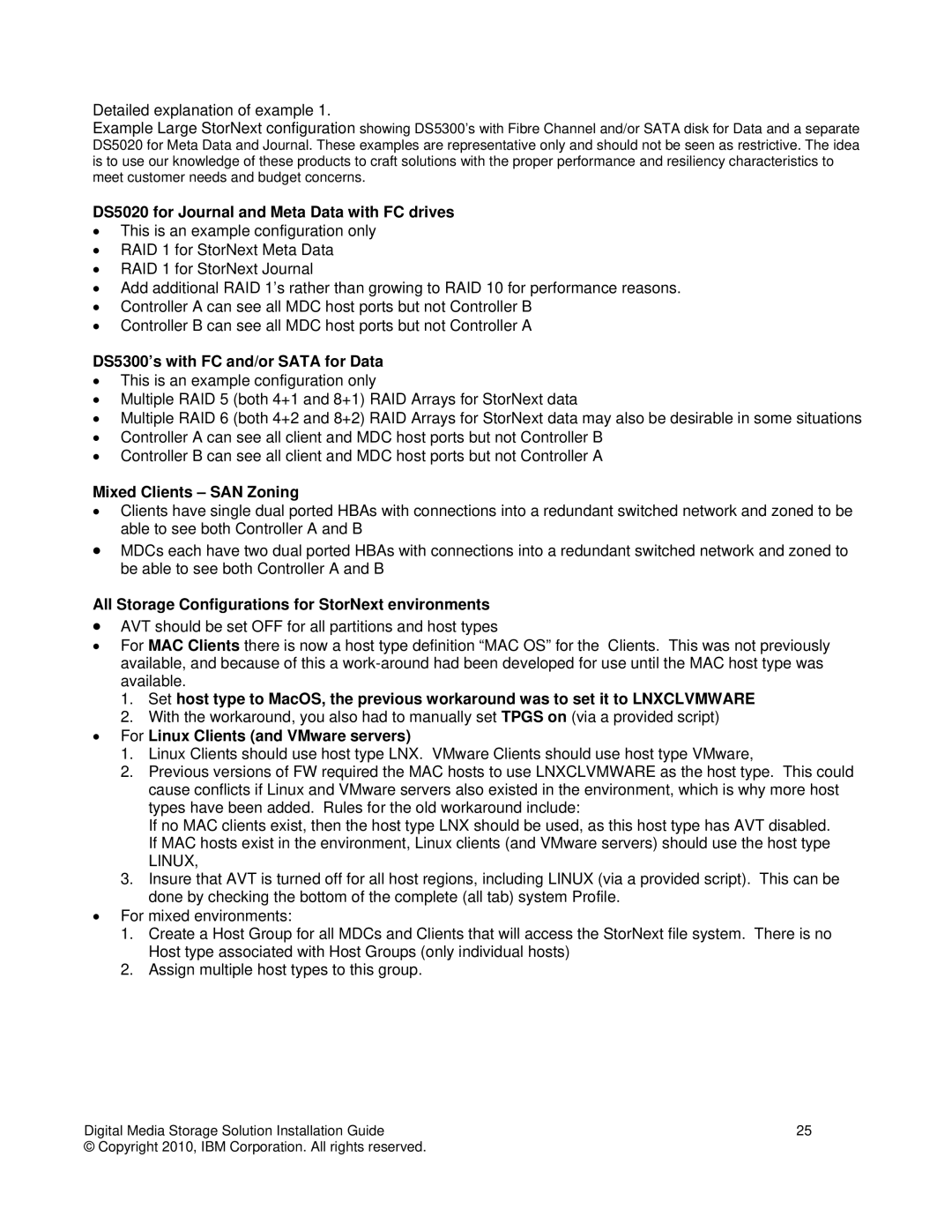Detailed explanation of example 1.
Example Large StorNext configuration showing DS5300’s with Fibre Channel and/or SATA disk for Data and a separate DS5020 for Meta Data and Journal. These examples are representative only and should not be seen as restrictive. The idea is to use our knowledge of these products to craft solutions with the proper performance and resiliency characteristics to meet customer needs and budget concerns.
DS5020 for Journal and Meta Data with FC drives
•This is an example configuration only
•RAID 1 for StorNext Meta Data
•RAID 1 for StorNext Journal
•Add additional RAID 1’s rather than growing to RAID 10 for performance reasons.
•Controller A can see all MDC host ports but not Controller B
•Controller B can see all MDC host ports but not Controller A
DS5300’s with FC and/or SATA for Data
•This is an example configuration only
•Multiple RAID 5 (both 4+1 and 8+1) RAID Arrays for StorNext data
•Multiple RAID 6 (both 4+2 and 8+2) RAID Arrays for StorNext data may also be desirable in some situations
•Controller A can see all client and MDC host ports but not Controller B
•Controller B can see all client and MDC host ports but not Controller A
Mixed Clients – SAN Zoning
•Clients have single dual ported HBAs with connections into a redundant switched network and zoned to be able to see both Controller A and B
•MDCs each have two dual ported HBAs with connections into a redundant switched network and zoned to be able to see both Controller A and B
All Storage Configurations for StorNext environments
•AVT should be set OFF for all partitions and host types
•For MAC Clients there is now a host type definition “MAC OS” for the Clients. This was not previously available, and because of this a
1.Set host type to MacOS, the previous workaround was to set it to LNXCLVMWARE
2.With the workaround, you also had to manually set TPGS on (via a provided script)
•For Linux Clients (and VMware servers)
1.Linux Clients should use host type LNX. VMware Clients should use host type VMware,
2.Previous versions of FW required the MAC hosts to use LNXCLVMWARE as the host type. This could cause conflicts if Linux and VMware servers also existed in the environment, which is why more host types have been added. Rules for the old workaround include:
If no MAC clients exist, then the host type LNX should be used, as this host type has AVT disabled. If MAC hosts exist in the environment, Linux clients (and VMware servers) should use the host type
LINUX,
3.Insure that AVT is turned off for all host regions, including LINUX (via a provided script). This can be done by checking the bottom of the complete (all tab) system Profile.
•For mixed environments:
1.Create a Host Group for all MDCs and Clients that will access the StorNext file system. There is no Host type associated with Host Groups (only individual hosts)
2.Assign multiple host types to this group.
Digital Media Storage Solution Installation Guide | 25 |
© Copyright 2010, IBM Corporation. All rights reserved. |
|
